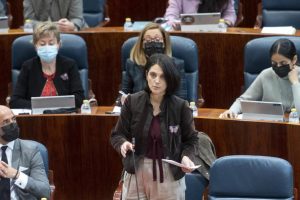“[El ajuste estimado por el CEFP] “This does not represent a great saving compared to the entire public budget or to what is allocated to the agencies themselves. In the end, with the elimination of the positions of commissioners of the IFT, the INAI, the CRE, Cofece or the CNH, a saving of 84 million pesos a year is estimated, which is very little to argue that the main objective is to generate savings,” said José Luis Clavelina, Research Director of the Center for Economic and Budgetary Research (CIEP).
The opinion of the reform initiative on organic simplification, approved last Friday in the Constitutional Affairs Committee establishes that the commissioners, who continue in their position upon the entry into force of the Decree, must conclude their functions with the new legislation.
He also said that the aim is to integrate the tasks of these seven agencies into different federal institutions.
For example, the National Council for the Evaluation of Social Development Policy (Coneval) would be integrated into Inegi, an organ that is also autonomous. This would imply that the budget allocated to this Council would be reassigned to the statistics institute to meet the objectives of these autonomous entities.
More expensive
According to the PEF approved for 2024, the budget allocated to these seven institutions amounts to 5,042 million pesos, which represents 0.055% of the total expenditure of the public administration, which is greater than 9 trillion pesos.
“In practice, in order to comply with the mandates and functions of these autonomous bodies, which are planned to disappear, one would think that they would have to make adjustments in their operation; perhaps hire staff, rent offices…
“It’s not like these 5 billion pesos in savings will be obtained, because at the end of the day these agencies would have to increase their budget to some extent if they want to fully comply with the mandate of the agencies,” said Diego Díaz, coordinator of Public Finances at the Mexican Institute for Competitiveness (IMCO).
According to the Decree, the savings generated by the dissolution of the seven public entities will be allocated to the Welfare Pension Fund.
Uncertainty and volatility
The CIEP researcher considered that, in itself, the volatility that is being generated by the discussion and uncertainty of the reforms in the exchange rate of the peso against the dollar already represents costs for public finances, such as the increase in foreign public debt.
The IMCO specialist believes that the extinction of these bodies represents implications for attracting investments and the well-being of the population.
“In no way do these savings justify the disappearance of these autonomous bodies and the way in which they compromise the fulfilment of their functions.
“In the end, they address multiple areas, such as guaranteeing better prices and quality of the goods and services that Mexicans receive from companies, to issues of access to information, in the case of the INAI, passing through what it does best in terms of educational evaluation and the CNH itself in terms of energy regulation,” said Díaz.














Add Comment